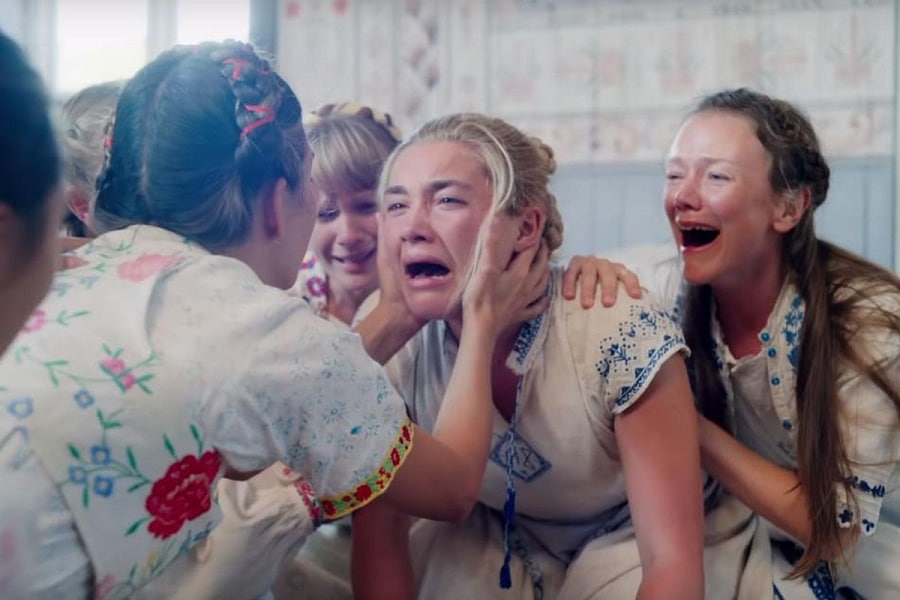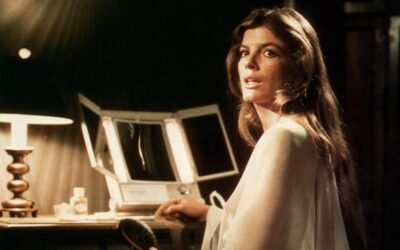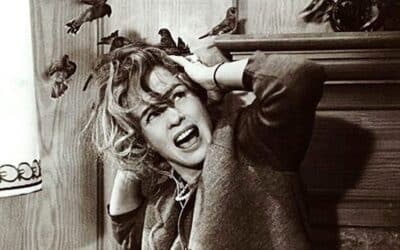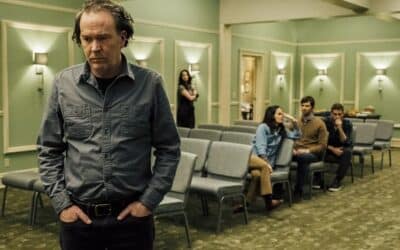
Folk Horror
Many a rural landscape harbors shadows longer and deeper than the tallest, thickest trees. It is in this setting that we find the twisted roots of folk horror, a genre that knows just how to prickle your skin with the chill of primal fear. But what is it about folk horror that sends the chill up your spine and pulls you into its gnarled embrace?
Folk horror, a term that has been tossed around the chittering fires of pop culture in the last few years, stands out as a genre that brings together the uncanny, the arcane, and the unsettling. The genre itself is rooted in the rural, the ancient, and the arcane, casting a spell on its audiences using a powerful potion of folklore, superstition, and the supernatural.
The quintessence of folk horror can be traced back to its ‘Unholy Trinity’ – British films from the late 60s and early 70s that laid the groundwork for the genre. “Witchfinder General”, “The Blood on Satan’s Claw”, and the unforgettable “The Wicker Man”, these chilling narratives unfold in bucolic settings, portraying seemingly idyllic societies corrupted by malevolent supernatural forces, often leading to a brutal, despairing climax.
But defining folk horror isn’t a straightforward task of stacking up features and checking boxes. It doesn’t have a clearly defined villain dressed in an ominous cloak, nor does it seek comfort in familiar urban settings. Rather, it is a genre defined more by its atmosphere and the feelings it evokes. It dances to the rhythm of the deeply human fear of the unknown, the fear of the ‘other’—be it other people, other places, or even other eras.
In folk horror, the setting plays a crucial role, almost a character itself. The genre favors rural landscapes that are cloaked in ancient customs and beliefs. The rural setting, usually portrayed as a bucolic paradise, is gradually peeled away to reveal layers of ancient terror. It may not be as overtly menacing as a haunted mansion or an abandoned asylum, but its quiet, subtle terror seeps into your bones until the idyllic countryside no longer seems so benign.
Folklore, a cornerstone of this genre, serves as the mysterious companion to the rural landscape. The beliefs, customs, and stories of a community, steeped in centuries of whispered tales, form the backbone of folk horror. Whether it’s a quaint village practicing arcane rituals or a secluded commune worshiping a forgotten deity, folklore injects a vein of dread into the narrative.
Folk horror has a certain penchant for isolation too. Not merely the physical kind – the remote farmhouses, the secluded hamlets – but a deep-rooted societal isolation, often depicted through communities untouched by modern civilization. This creates a gap between ‘us’ and ‘them’, where the ‘them’ is clouded in an eeriness as unrelatable as it is intriguing. The protagonists of these stories are typically outsiders who stumble upon or are unwillingly dragged into the enigmatic world of these isolated societies.
It’s no coincidence that folk horror experiences resurgence in times of societal upheaval and uncertainty. It taps into the fear that lurks in the corners of collective unconsciousness, a fear that is much older and deeper than any contemporary horror can hope to reach. Folk horror takes us back to a time when the world was full of unexplainable phenomena, when nature was not our friend but a force to be feared, and when ancient rituals and deities dictated life and death.
Moreover, the supernatural elements in folk horror are not a mere means to scare. They serve to emphasize the connection between the human and the natural world, suggesting that the natural world is imbued with an ancient power that mankind has long forgotten or wilfully ignored.
If this whirlwind trip through the shrouded pathways of folk horror has left you with goosebumps, then you’ve caught a glimpse of the genre’s spectral allure. It’s a genre that revels in the obscure and the primordial, daring you to peep behind the rustling curtain of folklore and superstition.
In the end, folk horror leaves us with a shiver-inducing reminder: Civilization is but a thin veneer, and beneath its fragile surface lurk ancient fears and horrors, rooted in the very essence of humanity. So, the next time you wander into the leafy embrace of a rural landscape, remember: It’s not always the unfamiliar urban shadows that harbor the most terror, but often, it’s the familiar rustling of the leaves under a moonlit sky.
advertisement
Folk Horror Novels and Films
Novels:
Harvest Home by Thomas Tryon: Set in a quaint New England town, this novel tells the chilling tale of a big city family that gets swept up in the ancient, disturbing traditions of their new rural community. The narrative brilliantly intertwines psychological horror with elements of the pagan and the supernatural.
The Ritual by Adam Nevill: Four old university friends set off on a reunion trip in the Scandinavian wilderness, only to discover that they’re not alone in the ancient forests. Nevill skillfully infuses primal fear into this novel, resulting in a classic folk horror that’s as eerie as it is thrilling.
The Red Tree by Caitlin R. Kiernan: After moving into an old farmhouse in Rhode Island, a troubled writer stumbles upon a manuscript that tells a tale of horror centered around a sinister tree. Kiernan’s novel brings folk horror to America, weaving a creepy narrative filled with psychological tension and dread.
Films:
The Wicker Man (1973): When a devoutly Christian police sergeant travels to a remote Scottish island to investigate a girl’s disappearance, he encounters a society practicing pagan rituals. Directed by Robin Hardy, this cult classic stands as one of the greatest exemplars of folk horror, combining mystery, music, and the macabre.
The Witch (2015): Set in 17th-century New England, a family banished from their Puritan settlement faces supernatural terror lurking in the nearby woods. Robert Eggers’ directorial debut is a haunting exploration of fear and paranoia, with a spine-chilling atmosphere that speaks volumes about the genre’s potency.
Midsommar (2019): Ari Aster’s sophomore film follows a grieving woman who joins her boyfriend and his friends at a festival in a remote Swedish village, which turns out to be a nightmare of bizarre and horrifying rituals. This sun-soaked nightmare gives a fresh twist to the genre, proving that terror doesn’t only lurk in shadows and darkness..
More Horror Features
1970s Horror
The 1970s may be gone, but the fear they inspired remains
1960s Horror
The best of 1960s horror, from page to screen
Horror Through the Ages
A Journey Through Time and Terror



